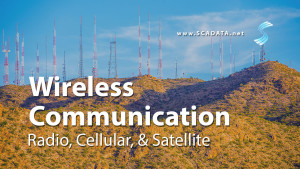Wireless technology is something we take for granted in our tech savvy world, but it�s fairly new, relatively speaking. It all started with Guglielmo Marconi and his innovative spirit. On December 12, 1901, a transmission from the Marconi station in Glace Bay, Nova Scotia, Canada, became the world’s first radio message to cross the Atlantic from North America.
Marconi is credited as the inventor of radio. He paved the way for many inventors and their creations. Consider modern radio technology in both consumer and commercial environments. Gas producers and pipeline companies have relied for many years on long-range wireless technology to transmit and distribute critical operational data.
The smartphone revolution is a perfect example on the consumer front. As consumer demand has risen for devices with embedded Wi-Fi (Bluetooth and broadband capabilities), the price of radio modules has fallen sharply. The result? You will find that more and more vendors have integrated radio modules into a long list of devices and sensors.
The oil and gas industry is no exception. It has become widely dependent on wireless instrumentation also. Why? The answer comes down to dollars and cents. By eliminating cabling and trenching, you can dramatically reduce upfront costs. Because wireless instrumentation is battery powered, these devices are much easier to deploy in the field compared to wired systems. Wired systems can take days or weeks to be properly installed. On the other hand, wireless instruments require only the sensor to be installed, saving time and money.
Safety and environmental compliance are other important factors. For example, wireless technology reduces the risk of injury or exposure to toxins. Personnel are frequently prone to such risks while reading manual pressure gauges during the initial flowback period. EPA regulations in many regions require the use of a Vapor Recovery Unit (VRU) to burn off residual gases from separators and condensate tanks. A wireless temperature sensor can monitor such activity and report an alarm condition if the flame goes out.
With more pipelines being built every day, the strength and growth of this wireless connectivity is crucial to the future of the oil and natural gas industry. Want to learn more? Check out our post on wireless communication for SCADA systems.




